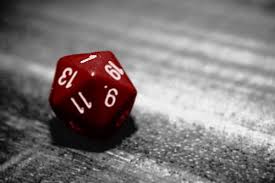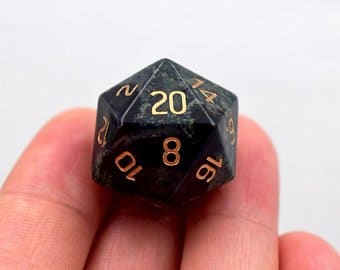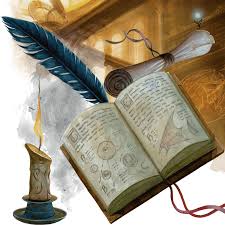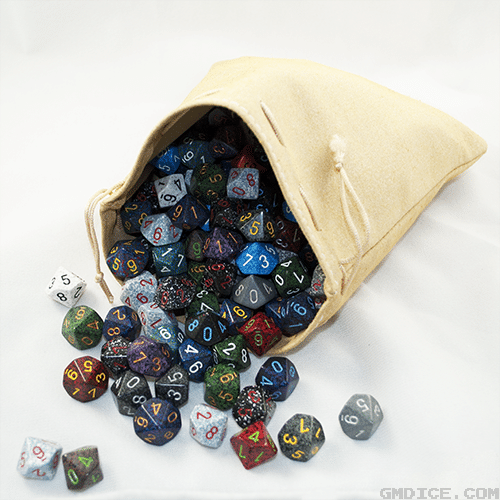The revolutionary idea, the epitome of the fifth edition of Dungeon and Dragons, a completely stupid rule. These are all used to describe the mechanic of advantage and disadvantage 5e when playing Dungeon and Dragons.
So, what is advantage and disadvantage for the game? Well, it’s actually really simple. Basically, you roll your 20-sided dice twice. If it’s advantage you choose the higher number, however, if it’s at disadvantage you choose the lower number. Moreover, if you have ways to get advantage twice, it doesn’t matter as you can only gain the benefit of advantage once each roll and disadvantage works the same way. This means you do not have to worry about having your arms tied and blind while fighting. The worse you will suffer is taking the lower of two D20 rolls. Finally, the rule has the stipulation that if something is giving you advantage and you also have something giving you disadvantage you only roll once as the two cancel each other out and even if you have 9000 reasons for disadvantage but only one reason for advantage. They still cancel out.
Simplicity
Now you might be thinking, “this is absolutely stupid Anderson, this completely breaks the realistic idea of fighting.” To this, I say, “you’re arguing the realism of a fight when we are playing a game where you can cast magic and fall from a hundred feet and be fine? None of this is realistic!” What this accomplishes is it makes the game a much more simplified approach so you do not need a calculator to play. If you want to do that, then play Pathfinder where you can be multiplying dividing and adding all to see if you hit on your first role.
However, this is why many people love fifth edition as the battles, skill checks, and stories aren’t being bogged down by stopping the session to go back to school and do multi-step math problems. No, it is just hey you did a good move earlier congrats you have advantage on your next attack or skill roll, or wow you fell down from nothing… have disadvantage on your next roll or skill check. It makes the game flow smoother and much easier to play without worrying if you did the math correctly.

Harmful Uses: Advantage and Disadvantage 5e
Now, this can make stuff extremely fun as there is nothing as sweet as hearing you have advantage and nothing more terrifying than you have disadvantage. For instance, there was one time I was fighting a creature so powerful it was terrifying my team. It attacked multiple times, restrained players, and the worse of it all was give it gave us disadvantage when we tried to hit it if it hit us first. What pray tell was it you might ask? It was a huge talking spider.
That’s right a party that killed ogres, griffons, and freed villages from tyranny were getting decimated because of a damn spider that just kept biting us and poisoning us and giving us disadvantage anytime we tried to attack it. It was definitely not our proudest moment. And, it served as a grim reminder of how devastating disadvantage can be on the party. Especially when we thought it would be easy.

Being Smart: Advantage And Disadvantage 5e
After an hour, we finally killed every last one of those spiders… Sadly the job wasn’t done as we had the queen to take care of. Wounded battered and barely able to take down her minions you would think we all died as a result. Actually, we learned from our mistakes and decimated the boss quite easily. We took note and began thinking of ways to grant us advantage.
The first was to get elevated and have our range attackers from up above to see if we could not get advantage from there. The second was to have our battle master use his ability called distracting strike which gives the next person to attack advantage. Third, we had our mage give our fighter protection from poison which gives him advantage on resisting the effects of poison. After we had a strategy in place we implemented our plan. In less than ten minutes the boss was dead, the loot was ours, and the party victorious. Now, this had some planning behind it but we used the advantage mechanic to our benefit much like our lovely Dungeon Master used disadvantage to reign hell onto our party.

Reasons For Advantage and Disadvantage In 5e
Now before we begin the list, this is not exhaustive. Dungeon Masters can grant advantage and disadvantage for any reason they want too. For instance, flanking is not on the list but is a popular choice for homebrews. So, without further a due these are book uses that state reasons for advantage and disadvantage in 5e.
RACES
- Dwarves gain advantage on saving throws against poison.
- Halflings gain advantage on saving throws against being frightened.
- Elves gain advantage on saving throws against being charmed.
- Stout Halflings gain advantage on saving throws against poison.
CLASSES
- The Figthter’s “Protection” stance can use their reaction to give disadvantage to an attack made against a creature less than 5 feet away.
- Rogues of level 18+ negate the advantage of any attack against them. As long as they are not incapacitated.
- Thief rogues of level 9+ have advantage on Dexterity (Stealth) checks if they move less than half their speed that turn.
EQUIPMENT
- When another character helps you use a ram to break a door, you gain advantage on the Strength check.
- Wearing armor you are not proficient with causes disadvantage on ability checks, saving throws or attack rolls that involve Strength or Dexterity.
- Wearing some medium armors and all heavy armors causes disadvantage on Dexterity (Stealth) checks.
- Drinking antitoxin gives you advantage on saving throws against poison for 1 hour.
- Small creatures have disadvantage on attack rolls with heavy weapons.
- Using crowbars grant advantage to Strength checks, when leverage applied
- A magnifying glass grants advantage on ability checks to appraise, investigate, or inspect a small or detailed item.
- Saddles on a mount give advantage on any check to remain mounted.
- Using a Lance, attacks are at disadvantage if the target is within 5 feet of you.
COMBAT
- Using the Dodge action during combat makes any attack roll against you at disadvantage and grant advantage on Dexterity saving throws, until the start of your next turn. Unless you can’t see the attacker.
- Ranged attacks within 5 feet of a hostile creature who can see you, have disadvantage on the attack roll.
- Using the Help action can give an ally advantage in one of his/her own ability checks before the start of your next turn. Alternatively, it can provide advantage on the an ally’s first attack roll against a monster.
- Ranged attacks whose target is within a weapon’s long range, but not within normal range, have a disadvantage on the attack roll.
- Attacking an enemy while hidden, and they don’t detect you approaching, grants you advantage on attack rolls. Conversely, attacking enemies you can’t see gives you disadvantage on attack rolls.
ENVIRONMENT
- In a lightly obscured area, Wisdom (Perception) checks that rely on sight are made at a disadvantage.
- When making a melee weapon attack underwater, a creature that doesn’t have a swimming speed, have disadvantage on the attack roll unless the weapon is a dagger, javelin, short sword, spear, or trident. Ranged attacks against targets within normal range are made with disadvantage on the attack rolls.
SPELLS
- The next attack roll made against a target hit by Guiding Bolt (before the beginning of the caster’s next turn) has advantage.
- Beacon of Hope causes targets to have advantage on Wisdom saving throws and death saving throws.
- Creatures within the radius of a Holy Aura and are chosen by the caster, have advantage on all saving throws. Other creatures have disadvantage on attack rolls against them.
- The target of Charm Person, Dominate Person, and Dominate Monster do their Wisdom saving throws with advantage if you and/or someone friendly to you is fighting them.
- Wisdom saving throws against ill effects of Dream are made at a disadvantage if the caster has a portion of the target’s body.
- Attacks rolls against targets affected by Faerie Fire are made with advantage.
- Blur causes creatures to have disadvantage on attack rolls against you. If they rely on sight.
- The target of Foresight has advantage on attack rolls, ability checks, and saving throws. Additionally, attack rolls against them are made at disadvantage.
- Someone who consumes the food and drinks generated by Heroes’ Feast makes all Wisdom saving throws with advantage for the next 24 hours.
- The target of the Haste spell has advantage on Dexterity saving throws.
- The target of Otto’s Irresistible Dance has disadvantage on Dexterity saving throws and attack rolls. Other creatures have advantage on attack rolls against them.
- Undead and oozes have disadvantage on saving throws against the Sunburst spell.
- Resurrection on a creature that has been dead for more than a year forces the caster to have disadvantage on all attack rolls, ability checks, and saving throws until they finish a long rest.
- Shocking Grasp is made with advantage if the target is wearing metallic armor.
CONDITIONS
- The Attack rolls against a petrified target have advantage.
- Attacks against a blinded target have advantage.
- Attack rolls made by a blinded creature have disadvantage.
- Attacking against a paralyzed target have advantage.
- Attacks against an invisible target have disadvantage.
- Attack rolls made by an invisible creature have advantage.
- Attack rolls and ability checks made by a poisoned creature have disadvantage.
- A frightened creature has disadvantage on ability checks and attack rolls while the source of its fear is within line of sight.
- Attack rolls against a restrained target have advantage.
- Attacks and Dexterity saving throws made by a restrained creature have disadvantage.
- Attacking against a stunned target have advantage.
- Attack rolls against a prone target have advantage if the attacker is within 5 feet, or disadvantage otherwise.
- Attacking against an unconscious target have advantage.
- Attacks made by a prone creature have disadvantage.
- The charmer has advantage on any ability check to interact socially with a charmed creature.
- Level 1 of exhaustion causes disadvantage on ability checks.
- Level 3 of exhaustion causes disadvantage on attack rolls and saving throws.
OTHER
- Inspiration: given by the dungeon master, can be spent to gain advantage on an attack roll, saving throw, or ability check.
- Optionally, the encumbrance rule can be used for lifting and carrying weight. Carrying weight in excess of 10 times your Strength score forces disadvantage on ability checks, attack rolls, and saving throws that use Strength, Dexterity, or Constitution.
- When squeezing through a space one size smaller than itself, they have disadvantage on attack rolls and Dexterity saving throws. Attack rolls against them are made at an advantage.
- After three days of downtime between adventures spent recuperating from a series of diseases and/or poisons, on a successful DC 15 Constitution save, you gain advantage on saving throws against one of them for 24 hours.
So I hoped you enjoyed my explanation, list summary, and stories on the uses of advantage and disadvantage for 5e. If you enjoyed this list, then please check out my other guides here. If, however, you are more visual, then here is a Youtube video that I find explains the basic concepts really well. I hope you have fun with these rules and keep on rolling!

